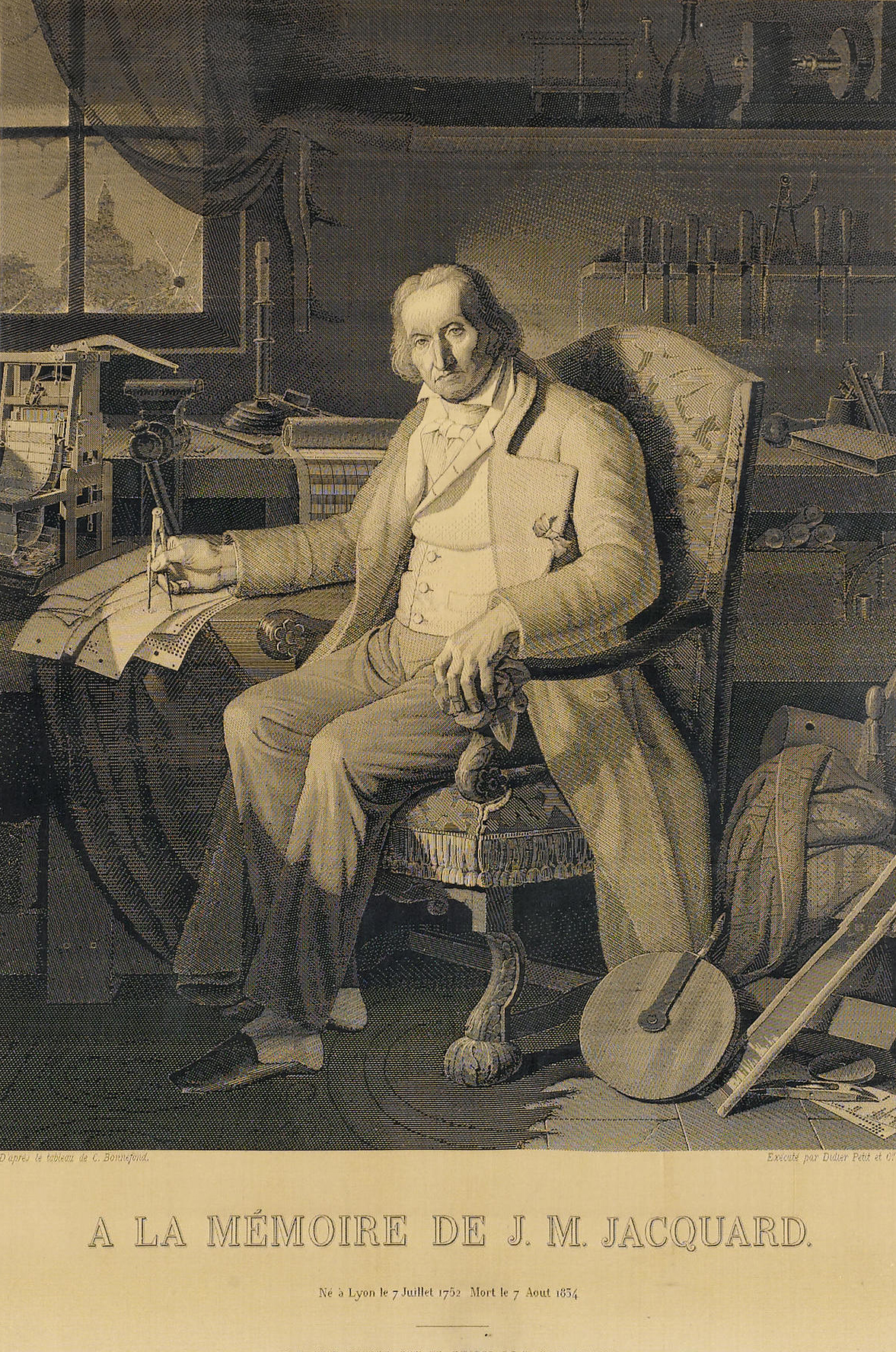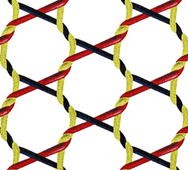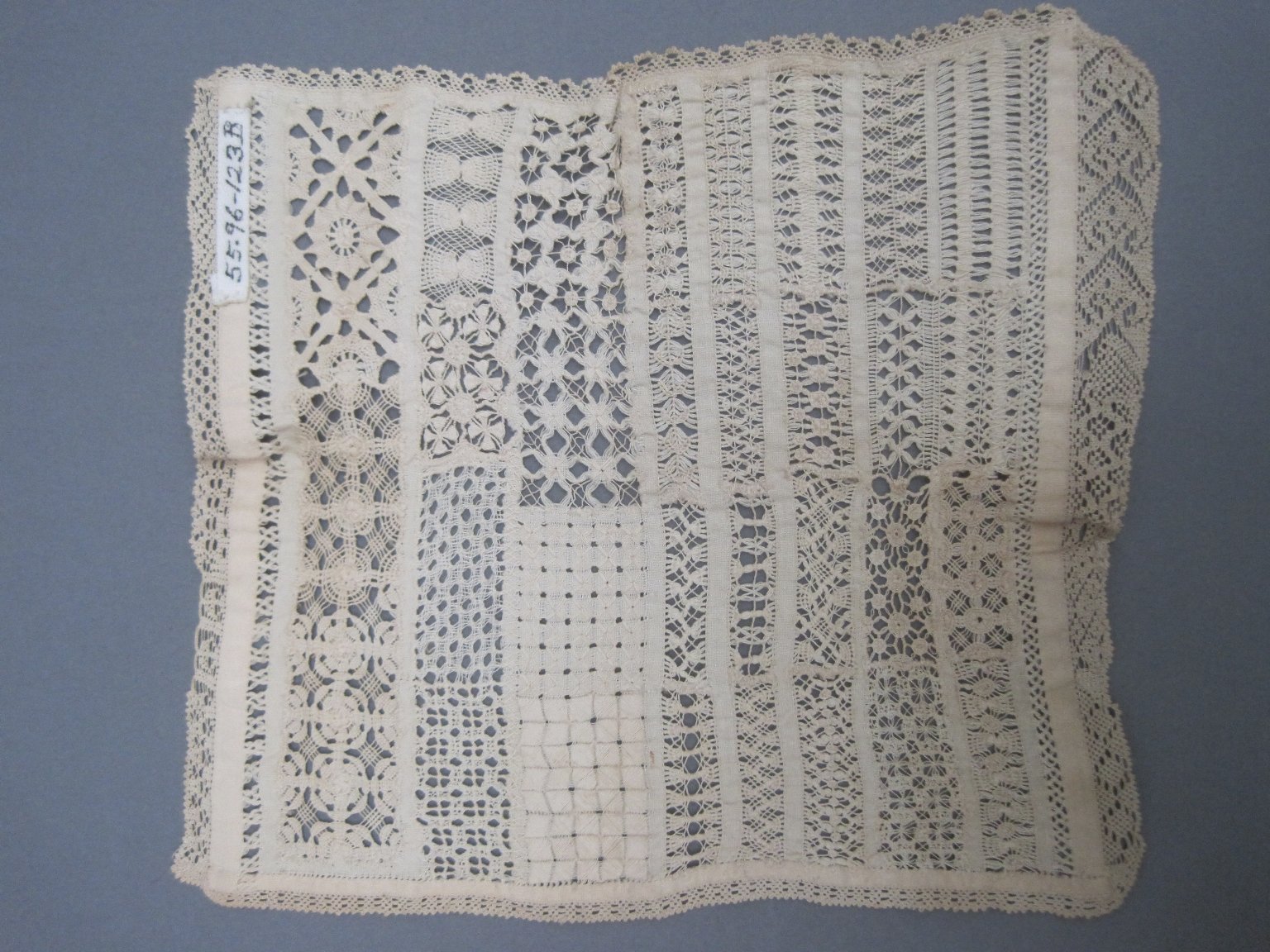|
Lace Machine
Lace machines took over the commercial manufacture of lace during the nineteenth century. History The stocking frame was a mechanical weft-knitting knitting machine used in the textile industry. It was invented by William Lee of Calverton near Nottingham in 1589. Framework knitting, was the first major stage in the mechanisation of the textile industry at the beginning of the Industrial Revolution. It was adapted to knit cotton, do ribbing and by 1800, with the introduction of dividers (divider bar) as a lace making machine. Bobbinet machines were invented in 1808 by John Heathcoat. He studied the hand movements of a Northamptonshire manual lace maker and reproduced them in the roller-locker machine. The 1809 version of this machine (patent no. 3216) became known as the ''Old Loughborough'', it was wide and was designed for use with cotton. The Old Loughborough became the standard lacemaking machine, particularly the 1820 form known as the Circular producing two-twist plain ... [...More Info...] [...Related Items...] OR: [Wikipedia] [Google] [Baidu] |
Lace
Lace is a delicate fabric made of yarn or thread in an open weblike pattern, made by machine or by hand. Generally, lace is divided into two main categories, needlelace and bobbin lace, although there are other types of lace, such as knitted or crocheted lace. Other laces such as these are considered as a category of their specific craft. Knitted lace, therefore, is an example of knitting. This article considers both needle lace and bobbin lace. While some experts say both needle lace and bobbin lace began in Italy in the late 1500s, there are some questions regarding its origins. Originally linen, silk, gold, or silver threads were used. Now lace is often made with cotton thread, although linen and silk threads are still available. Manufactured lace may be made of synthetic fiber. A few modern artists make lace with a fine copper or silver wire instead of thread. Etymology The word lace is from Middle English, from Old French ''las'', noose, string, from Vulgar Latin *' ... [...More Info...] [...Related Items...] OR: [Wikipedia] [Google] [Baidu] |
Joseph Marie Jacquard
Joseph Marie Charles ''dit'' (called or nicknamed) Jacquard (; 7 July 1752 – 7 August 1834) was a French weaver and merchant. He played an important role in the development of the earliest programmable loom (the " Jacquard loom"), which in turn played an important role in the development of other programmable machines, such as an early version of digital compiler used by IBM to develop the modern day computer. Sa Vie In his grandfather's generation, several branches of the Charles family lived in Lyon's Couzon-Au-Mont d’Or suburb (on Lyon’s north side, along the Saône River). To distinguish the various branches, the community gave them nicknames; Joseph’s branch was called “Jacquard” Charles. Thus, Joseph's grandfather was Bartholomew Charles ''dit'' alledJacquard. Joseph Marie Charles ''dit'' Jacquard was born into a conservative Catholic family in Lyon, France, on 7 July 1752. He was one of nine children of Jean Charles ''dit'' Jacquard, a master weaver of ... [...More Info...] [...Related Items...] OR: [Wikipedia] [Google] [Baidu] |
The Employment Of Women In Britain, 1914-1918 Q28123
''The'' () is a grammatical article in English, denoting persons or things already mentioned, under discussion, implied or otherwise presumed familiar to listeners, readers, or speakers. It is the definite article in English. ''The'' is the most frequently used word in the English language; studies and analyses of texts have found it to account for seven percent of all printed English-language words. It is derived from gendered articles in Old English which combined in Middle English and now has a single form used with pronouns of any gender. The word can be used with both singular and plural nouns, and with a noun that starts with any letter. This is different from many other languages, which have different forms of the definite article for different genders or numbers. Pronunciation In most dialects, "the" is pronounced as (with the voiced dental fricative followed by a schwa) when followed by a consonant sound, and as (homophone of pronoun ''thee'') when followed by a v ... [...More Info...] [...Related Items...] OR: [Wikipedia] [Google] [Baidu] |
Old Loughborough
Bobbinet tulle or genuine tulle is a specific type of tulle which has been made in the United Kingdom since the invention of the bobbinet machine. John Heathcoat coined the term "bobbin net", or bobbinet as it is spelled today, to distinguish this machine-made tulle from the handmade " pillow lace", produced using a lace pillow to create bobbin lace. Machines based on his original designs are still in operation today producing fabrics in Perry Street, Chard, Somerset, UK. When bobbinet is woven with spots, it is called point d'esprit. History The forerunner of bobbinet tulle was bobbin lace. Lace has been produced for a long time, made in tedious hand labour with thin thread and needles or bobbins. Bobbin lace is made by weaving the threads by moving the bobbins over or under each other. Much bobbin lace is based on a net ground. By the end of the 18th century, people tried to produce the net ground mechanically. In 1765 they managed to create a tulle-like fabric on a so- ... [...More Info...] [...Related Items...] OR: [Wikipedia] [Google] [Baidu] |
Lace Its Origin And History Leavers's Lace Machine
Lace is a delicate fabric made of yarn or thread in an open weblike pattern, made by machine or by hand. Generally, lace is divided into two main categories, needlelace and bobbin lace, although there are other types of lace, such as knitted or crocheted lace. Other laces such as these are considered as a category of their specific craft. Knitted lace, therefore, is an example of knitting. This article considers both needle lace and bobbin lace. While some experts say both needle lace and bobbin lace began in Italy in the late 1500s, there are some questions regarding its origins. Originally linen, silk, gold, or silver threads were used. Now lace is often made with cotton thread, although linen and silk threads are still available. Manufactured lace may be made of synthetic fiber. A few modern artists make lace with a fine copper or silver wire instead of thread. Etymology The word lace is from Middle English, from Old French ''las'', noose, string, from Vulgar Latin *''l ... [...More Info...] [...Related Items...] OR: [Wikipedia] [Google] [Baidu] |
Métier Bobin
Métier, Limited is a project portfolio management (PPM) company founded in 1998. Métier develops project portfolio management (PPM) software. The company is headquartered in Healdsburg, California. Company Métier develops, manufacturers and maintains proprietary project portfolio management software. Métier's project portfolio management software was formerly known as PPM Central, and before that, was known as ''WorkLenz''. It uses the HTML5 technology. The Taxonomy tool is an additional functionality, which allows users to explore and navigate their portfolio. The taxonomic structure provides a method for analyzing and reporting on organizational big data. The integrated toolset allows users to derive reports at all levels of the Taxonomy. Métier is using natural language processing to improve project and project portfolio management. WorkLenz WorkLenz was a web based project portfolio management application with no active controls and no persistent cookies. It was bu ... [...More Info...] [...Related Items...] OR: [Wikipedia] [Google] [Baidu] |
DMM 64724 Strumpfwirkstuhl
DMM may refer to: Businesses * DMM Corporation (Digital Media Mart), a Japanese company which sold video games including eroge **DMM.com, its later incarnation *DMM Wales, a Welsh manufacturer of rock-climbing equipment Science and technology * Digital multimeter, a multi-functional electronic measuring instrument * Digital Molecular Matter, a computer game physics engine developed by Pixelux * Direct metal mastering, a vinyl record manufacturing technology by Teldec * ''Disease Models & Mechanisms'', a journal by the Company of Biologists * Dynamic-maturational model of attachment and adaptation, a transdisciplinary model describing relationship dynamics and attachment theory Other uses * Daniel Martin Moore, American singer * ''Domestic Mail Manual'', a U.S. Postal Service guide * King Fahd International Airport (IATA code: DMM), Dammam, Saudi Arabia * Project DMM A project is any undertaking, carried out individually or collaboratively and possibly involving research or de ... [...More Info...] [...Related Items...] OR: [Wikipedia] [Google] [Baidu] |
Barmen Lace Machine
The Barmen lace machine makes perfect copies of torchon lace and the simpler hand-made bobbin lace. Its bobbins imitate the movements of the bobbins of the hand-made lace maker. History The Barmen machine was developed in the 1890s in the Prussian city of Barmen, now part of Wuppertal Wuppertal (; "''Wupper Dale''") is, with a population of approximately 355,000, the seventh-largest city in North Rhine-Westphalia as well as the 17th-largest city of Germany. It was founded in 1929 by the merger of the cities and to ..., Germany, from a braiding machine. The Barmen laces were derived from solid braids later pieced with openwork. Design of machine The Barmen machine has its spindles arranged in a circle, each one carrying a large bobbin of thread. These can pass each other, so their threads twine together in a complex way. The threads run towards the centre, where the finished lace appears, rising upwards. The machine can only make one width at a time, and has ... [...More Info...] [...Related Items...] OR: [Wikipedia] [Google] [Baidu] |
Rachel (actress)
Rachel () was a Biblical figure, the favorite of Jacob's two wives, and the mother of Joseph and Benjamin, two of the twelve progenitors of the tribes of Israel. Rachel's father was Laban. Her older sister was Leah, Jacob's first wife. Her aunt Rebecca was Jacob's mother. After Leah conceived again, Rachel was finally blessed with a son, Joseph, who would become Jacob's favorite child. Children Rachel's son Joseph was destined to be the leader of Israel's tribes between exile and nationhood. This role is exemplified in the Biblical story of Joseph, who prepared the way in Egypt for his family's exile there. After Joseph's birth, Jacob decided to return to the land of Canaan with his family. Fearing that Laban would deter him, he fled with his two wives, Leah and Rachel, and twelve children without informing his father-in-law. Laban pursued him and accused him of stealing his idols. Indeed, Rachel had taken her father's idols, hidden them inside her camel's seat cushion, and ... [...More Info...] [...Related Items...] OR: [Wikipedia] [Google] [Baidu] |
Warp Knitting
Warp knitting is defined as a loop-forming process in which the yarn is fed into the knitting zone, parallel to the fabric selvage. It forms vertical loops in one course and then moves diagonally to knit the next course. Thus the yarns zigzag from side to side along the length of the fabric. Each stitch in a course is made by many different yarns. Each stitch in one wale is made by several different yarns. History Credit for the invention is usually given to a mechanic called Josiah Crane in 1775. He likely sold his invention to Richard March who patented (No. 1186) a warp frame in 1778. In the intervening three years March likely had discussed the device with Morris who submitted a similar patent (No.1282) for a twisting machine for making Brussels point lace. These early machines were modifications of the stocking frame with an additional warp beam. In 1795, the machine was successfully used to make lacy fabrics. Warp frames could be used with any thread, and the warps provide ... [...More Info...] [...Related Items...] OR: [Wikipedia] [Google] [Baidu] |
Wilhelm Barfuss , the Dutch national anthem
{{Disambiguation ...
Wilhelm may refer to: People and fictional characters * William Charles John Pitcher, costume designer known professionally as "Wilhelm" * Wilhelm (name), a list of people and fictional characters with the given name or surname Other uses * Mount Wilhelm, the highest mountain in Papua New Guinea * Wilhelm Archipelago, Antarctica * Wilhelm (crater), a lunar crater See also * Wilhelm scream, a stock sound effect * SS ''Kaiser Wilhelm II'', or USS ''Agamemnon'', a German steam ship * Wilhelmus "Wilhelmus van Nassouwe", usually known just as "Wilhelmus" ( nl, Het Wilhelmus, italic=no; ; English translation: "The William"), is the national anthem of both the Netherlands and the Kingdom of the Netherlands. It dates back to at least 1572 ... [...More Info...] [...Related Items...] OR: [Wikipedia] [Google] [Baidu] |
Loughborough
Loughborough ( ) is a market town in the Charnwood borough of Leicestershire, England, the seat of Charnwood Borough Council and Loughborough University. At the 2011 census the town's built-up area had a population of 59,932 , the second largest in the county after Leicester. It is close to the Nottinghamshire border and short distances from Leicester, Nottingham, East Midlands Airport and Derby. It has the world's largest bell foundry, John Taylor Bellfounders, which made bells for the Carillon War Memorial, a landmark in the Queens Park in the town, of Great Paul for St Paul's Cathedral, and for York Minster. History Medieval The earliest reference to Loughborough occurs in the Domesday Book of 1086, which calls it ''Lucteburne''. It appears as ''Lucteburga'' in a charter from the reign of Henry II, and as ''Luchteburc'' in the Pipe Rolls of 1186. The name is of Old English origin and means "Luhhede's ''burh'' or fortified place". Industrialisation The first sign of in ... [...More Info...] [...Related Items...] OR: [Wikipedia] [Google] [Baidu] |


.png)





